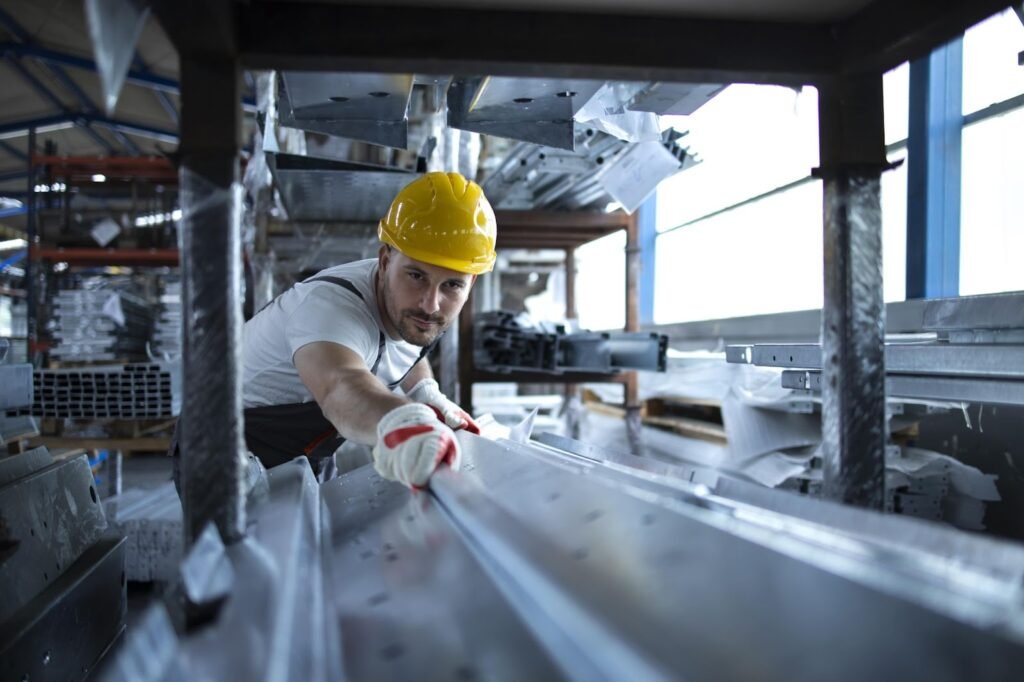Steel fabrication continues to be an essential service throughout Canadian industries in 2025—construction and automotive, energy, manufacturing, and infrastructure. Yet as the world’s markets change and technology advances, businesspeople are posing an important question: How much does it cost to fabricate steel in Canada now, and what can you expect to budget for in the future?
Knowing the drivers behind 2025 pricing assists businesses in budgeting more effectively, controlling supply chains, and staying clear of surprises during their build or production phases. If you’re purchasing custom pieces, frames, or complete assemblies, this report deconstructs what’s driving costs and where things are moving.
Average Cost Range in 2025
The average cost of Canadian steel fabrication in 2025 falls between:
$2.50 to $6.00 per pound, based on:
- The complexity of the work
- Type of steel used
- Tolerance levels and finishing requirements
- Volume of work
- Location and lead time
Per-hour fabrication costs for custom work range from $75 to $150, including cutting, bending, welding, and assembly services. Project work that involves design assistance, sophisticated CNC programming, or robotic welding will be at the upper end of that range.
Key Factors of Fabrication Costs
1. Material Costs
The cost of raw steel is the largest variable. In 2025, steel costs have been generally more stable after the roller-coaster prices of previous years, but they’re still influenced by:
- Global supply chain movements
- Tariffs on imported steel
- Back-and-forth demand from automobile and construction sectors
- Regional rates of production and regional availability of recycled steel
For example:
- Hot Rolled Steel (HRS) could range from $1,000 to $1,300 CAD/metric ton
- Stainless Steel due to the inclusion of nickel, corrosion resistance, and finish requirements costs more
- Aluminum and specialty alloys also drive up the price of the base metal if used together with steel
Mass orders will generally receive better prices, while specialty grades or limited amounts cost more.
2. Labour and Skill Requirements
Labour accounts for a significant percentage of fabrication costs, especially in precision and custom fabrication. Canadian fabricators in 2025 continue to grapple with shortages in skilled labor, which have led to:
- Higher wage rates for experienced welders and machinists
- More automated systems and robotics used
- Higher training costs passed on to consumers for high-skill jobs
The more intense or tolerance-sensitive the job, the more hours — and higher-skill labor — it requires. This directly influences the per-project cost.
3. Fabrication Techniques and Equipment Used
Not all fabrication is equal. Businesses that offer:
- Laser cutting
- Robotic or CNC welding
- Tube bending and rolling
- High-precision finishing or coating
will generally cost more, but deliver a cleaner, more efficient product with fewer errors or rework costs.
Custom tooling, multi-stage construction, or close-radius bending can cause fabrication cost to escalate. Accuracy, on the other hand, pays long-term dividends in reduced failures, better fit, and faster installation.
4. Size of the Job and Volume
Larger orders tend to decrease the unit cost. Fabricators spread out setup, programming, and prep time across multiple parts, saving efficiency.
For example:
- A solitary one-off custom bracket may cost $150
- An order for 500 identical brackets may bring the unit price down to $15–$30
Conversely, short runs with large customisation (such as prototypes, samples, or architectural services) are more costly because of setup time and material wastage.
5. Lead Time and Rush Jobs
Just like with any manufacturing service, time is money. If you need a quick turn-around, expect to pay extra. Rush jobs might include:
- Overtime labour charges
- Line schedule interruptions
- Express shipping on material or components
Planning your project early and providing clear specifications helps minimize these costs.
6. Finishing and Add-On Services
Steel fabrication doesn’t stop at cutting and welding. Many projects require:
- Powder coating or painting
- Galvanization for corrosion resistance
- Machining or threading
- Assembly or packaging
Each add-on increases cost but may also reduce your own downstream labour. In 2025, more fabricators are offering turnkey services that package design, fabrication, and finishing together.
Regional Differences in Canada
Prices vary by province based on regional wages, energy costs, and proximity of steel suppliers:
- Ontario and Quebec: Prices competitive due to bulk orders, but possibly affected by city wages
- Alberta and Saskatchewan: Insistent demand from oil, gas, and agriculture with some heavy-duty premium price
- British Columbia: Transport can inflate prices, but automation is keeping labors in check
- Atlantic Canada: May have a higher shipping cost for steel, but smaller retailers are competitive on custom work
Picking a local fabricator will cut freight costs and provide for faster lead times — especially on large or complex projects.
2025 Cost Control Tips to Fabrication
- Design with fabrication in mind: Keep joints simple, work with standard material sizes, and reduce part complexity.
- Select the appropriate partner: Seek out experienced fabricators in your market and with the correct equipment to suit your volume and specs.
- Package services: Having one supplier cut, weld, and finish can usually save coordination time and surprise costs.
- Pre-plan: Supply drawings and approvals ahead of time to save on rush charges.
- Set clear expectations: The more complete your brief, the more precise your quote—and the lower change orders.
Final Thoughts
Steel fabrication in Canada is a dependable, scalable option for manufacturers, builders, and industrial suppliers. In 2025, the secret to cost control is knowing the variables — material, labour, complexity, and time — and having partners who are both capable and transparent.
Regardless of whether you’re constructing a warehouse, creating specialized machinery, or embarking on a modular development, working closely with experienced fabrication shops—and understanding what to anticipate—keeps you on top of your timeline and budget.



